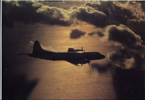ChezDaJez
Posts: 3436
Joined: 11/12/2004
From: Chehalis, WA
Status: offline

|
quote:
But IMO it was really the US that was ahead of the rest of the world, not Japan that was that much behind.
I agree with the first part of your statement but not the second. Japan's textile industry, copied from Britain's, was one of the most efficient in the world as was a good deal of her commercial
Japan never envisioned a long, protracted war so did not create an industrial plan for one. They failed to increase production to any great degree before the Pacific war started. What war industry that was increased was geared mainly towards the war in China. Once the Pacific war started, it was too late to ensure a rapid yet controlled expansion of industrial capacity without introducing more inefficiency in the short term. The US began preparing for war beginning in 1939 with the production of military items for England and France. In April 1941, Lend-Lease kick started to conversion to a warfooting. Japan barely took the first steps.
Also don't confuse efficiency with quantity. The two are not always related. 100 factories producing 1 widget a month are far less efficient than 1 factory producing 100 widgets a month. The net effect is the same but the efficiency is not. I look at efficiency as the number of manhours required to produce a product.
Here is a blurb I found relating to US preparations for producing war materials.
quote:
The reconversion of the auto industry was mastermined by William S. Knudsen, a former GM president.
Most auto builders date their transformation to a memorable meeting in Detroit on Oct. 25, 1940. Everyone who had anything to do with the manufacture of automobiles attended -- from primary producers, parts and appliance fabricators to tool and die makers.
Mr. Knudsen outlined principles and practices for farming out subcontracts. And when America entered the war, these principles enormously streamlined the participation of thousands of small industries in the national defense program.
Mr. Knudsen announced that he intended to use the auto industry to back up the airplane industry. As a result, DeSoto, Chrysler, Hudson and Goodyear Rubber Co. were soon building a long line of parts for Glenn L. Martin Co. of Baltimore. Murray Corp. did the same for Boeing's B-17 Flying Fortress. and Fisher Body Div. of GM backstopped partsmaking for North American.
Within months, engineers and designers from GM, Ford and Chrysler and from hundreds of parts and subcontracting firms swarmed through the plants of the aircraft industry. They made rough sketches, took notes and soaked up airplane expertise and know-how.
Japan never thought of doing that before the war. Here are some examples of American efficiency, much of it prewar.
quote:
They turned their brains and hands to making arms and ammunition, military vehicles, artillery and airplanes and equipment ranging from the gyro-compasses and rangefinders to top-secret devices for atomic bombs.
Ford fabricated the biggest airplane plant in the world -- Willow Run, MI, which built four-engined B-24 Liberator bombers. A mile long, quarter-mile wide and costing $100 million, the plant was larger than the combined prewar plants of the major airplane manufacturers of the day -- Boeing, Douglas and Consolidated. The facility built in excess of 8,500 Liberators -- more than one every hour.
Chrysler constructed its tank arsenal in Warren, MI, in 10 months and began shipping units by September 1941. The arsenal built more than 25,000 tanks.
Mass production of the Browning .30-caliber machine gun went to GM's Brown-Lipe-Chapin, AC Spark Plug, Frigidaire and Saginaw Steering divisions. In mid-November 1940, Saginaw produced its first model -- seven months ahead of schedule. In March 1942, when the contract called for delivering 280 weapons, Saginaw shipped 28,728 -- and dropped the price per copy from $667 to $141.44.
In tackling production of the famous Swedish-designed Oerlikon cannon, Pontiac Div. engineers virtually redesigned the entire piece. Their simplified breech casing cut machine time from 240 hours to 90. The new design reduced total production time by 35 hours and trimmed $166 from the unit cost.
Packard engineers completely redrafted the blueprint for Britain's Rolls-Royce Merlin aircraft engine. They did so in order to achieve the one-tenthousandths-of-an-inch tolerances demanded by Detroit's mass producers. Packard delivered the first nine Merlins at a cost of $6.25 million, with the company "reaping" a profit of $6,206 on the deal.
There are few examples of any similar efforts in Japan until late 1942, the most notable being merchant ship production and even that wasn't a stellar effort. It could be argued that their aircraft industry was effective in producing large numbers of aircraft but I'd be willing to bet that it did so with immense inefficiency in manpower.
Chez
Chez
_____________________________
Ret Navy AWCS (1972-1998)
VP-5, Jacksonville, Fl 1973-78
ASW Ops Center, Rota, Spain 1978-81
VP-40, Mt View, Ca 1981-87
Patrol Wing 10, Mt View, CA 1987-90
ASW Ops Center, Adak, Ak 1990-92
NRD Seattle 1992-96
VP-46, Whidbey Isl, Wa 1996-98
|
 Printable Version
Printable Version











 New Messages
New Messages No New Messages
No New Messages Hot Topic w/ New Messages
Hot Topic w/ New Messages Hot Topic w/o New Messages
Hot Topic w/o New Messages Locked w/ New Messages
Locked w/ New Messages Locked w/o New Messages
Locked w/o New Messages Post New Thread
Post New Thread